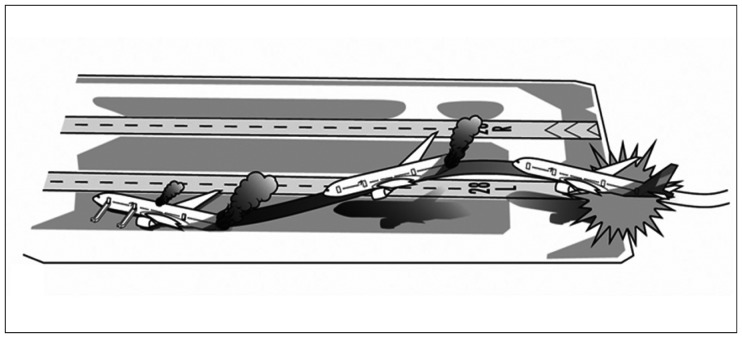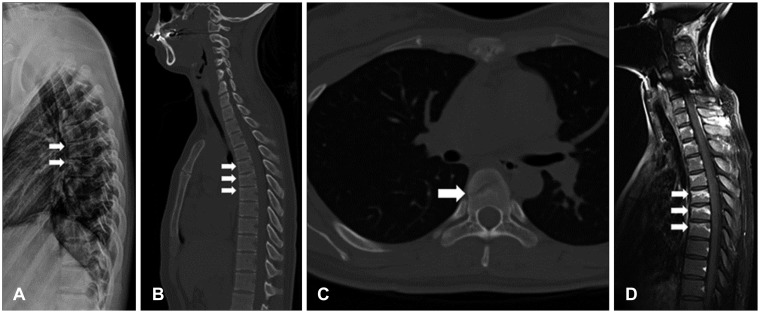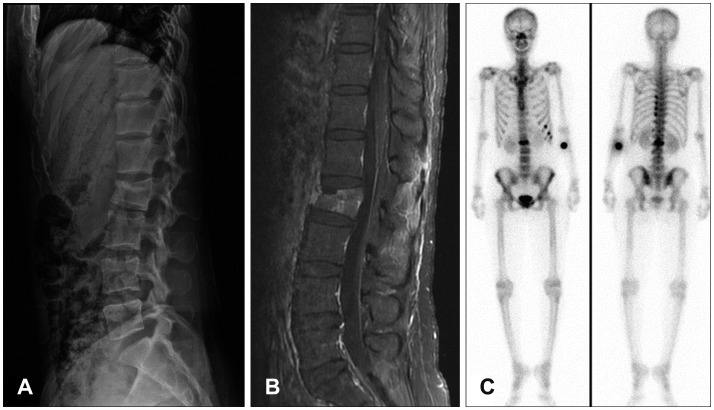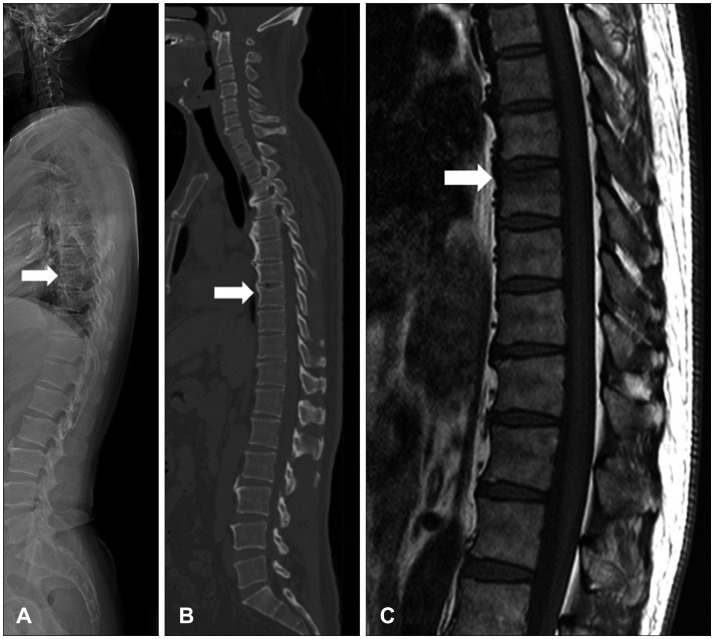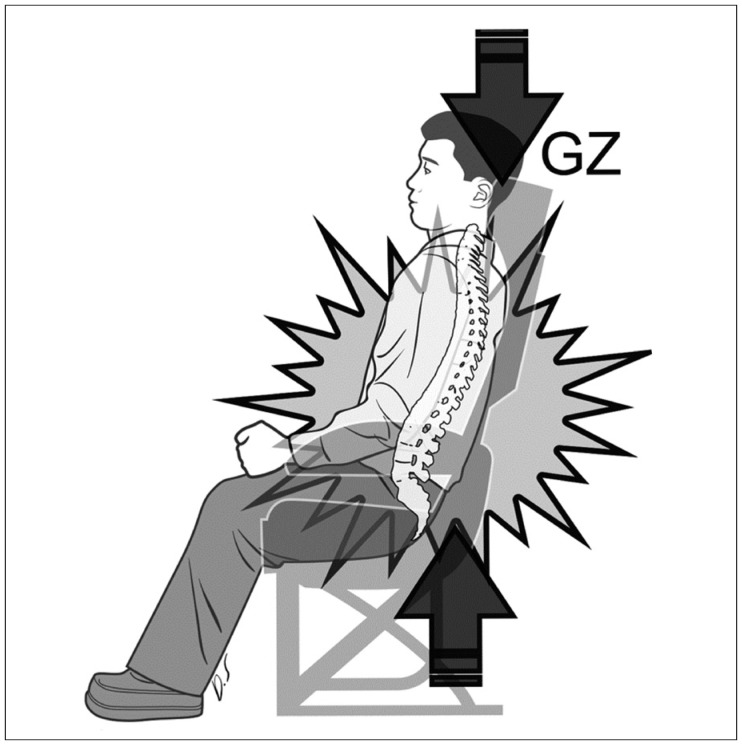Korean J Neurotrauma.
2015 Oct;11(2):195-200. 10.13004/kjnt.2015.11.2.195.
Three Cases of Spine Fractures after an Airplane Crash
- Affiliations
-
- 1Department of Neurosurgery, Yonsei University College of Medicine, Severance Hospital, Seoul, Korea. hayoon@yuhs.ac
- KMID: 2378287
- DOI: http://doi.org/10.13004/kjnt.2015.11.2.195
Abstract
- While injuries to the spine after an airplane crash are not rare, most crashes result in fatal injuries. As such, few studies exist that reported on spine fractures sustained during airplane accidents. In this report, we demonstrate three cases of spine fractures due to crash landing of a commercial airplane. Three passengers perished from injuries after the crash landing, yet most of the passengers and crew on board survived, with injuries ranging from minor to severe. Through evaluating our three spine fracture patients, it was determined that compression fracture of the spine was the primary injury related to the airplane accident. The first patient was a 20-year-old female who sustained a T6-8 compression fracture without neurologic deterioration. The second patient was a 33-year-old female with an L2 compression fracture, and the last patient was a 49-year-old male patient with a T8 compression fracture. All three patients were managed conservatively and required spinal orthotics. During the crash, each of these patients were subjected to direct, downward high gravity z-axis (Gz) force, which gave rise to load on the spine vertically, thereby causing compression fracture. Therefore, new safety methods should be developed to prevent excessive Gz force during airplane crash landings.
MeSH Terms
Figure
Reference
-
1. Belmont PJ Jr, Taylor KF, Mason KT, Shawen SB, Polly DW Jr, Klemme WR. Incidence, epidemiology, and occupational outcomes of thoracolumbar fractures among U.S. Army aviators. J Trauma. 2001; 50:855–861. PMID: 11371841.
Article2. Friedman A, Floman Y, Sabatto S, Safran O, Mosheiff R. Light aircraft crash--a case analysis of injuries. Isr Med Assoc J. 2002; 4:337–339. PMID: 12040820.3. Gregersen M, Knudsen PJ, Jensen S. The crash of the Partnair Convair 340/580 in the Skagerrak: traumatological aspects. Aviat Space Environ Med. 1995; 66:152–157. PMID: 7726780.4. Hämäläinen O, Visuri T, Kuronen P, Vanharanta H. Cervical disk bulges in fighter pilots. Aviat Space Environ Med. 1994; 65:144–146. PMID: 8161325.5. Hirsch C, Nachemson A. Clinical observations on the spine in ejected pilots. Acta Orthop Scand. 1961; 31:135–145. PMID: 13907682.
Article6. Lillehei KO, Robinson MN. A critical analysis of the fatal injuries resulting from the Continental flight 1713 airline disaster: evidence in favor of improved passenger restraint systems. J Trauma. 1994; 37:826–830. PMID: 7966484.7. Lundin T. Transportation disasters--a review. J Trauma Stress. 1995; 8:381–389. PMID: 7582604.
Article8. Malik ACH. Spinal injury in multiple ejections. Ind J Aerospace Med. 2007; 51:10–14.9. Mirzatolooei F, Bazzazi A. Analysis of orthopedic injuries in an airplane landing disaster and a suggested mechanism of trauma. Eur J Orthop Surg Traumatol. 2013; 23:257–262. PMID: 23412285.
Article10. Osborne RG, Cook AA. Vertebral fracture after aircraft ejection during Operation Desert Storm. Aviat Space Environ Med. 1997; 68:337–341. PMID: 9096832.11. Taneja N. Spinal disabilities in military and civil aviators. Spine (Phila Pa 1976). 2008; 33:2749–2753. PMID: 19050580.
Article12. Winkelhagen J, Bijlsma TS, Bloemers FW, Heetveld MJ, Goslings JC. [Airplane crash near Schiphol Airport 25 February 2009: injuries and casualty distribution]. Ned Tijdschr Geneeskd. 2010; 154:A1064. PMID: 20132571.

